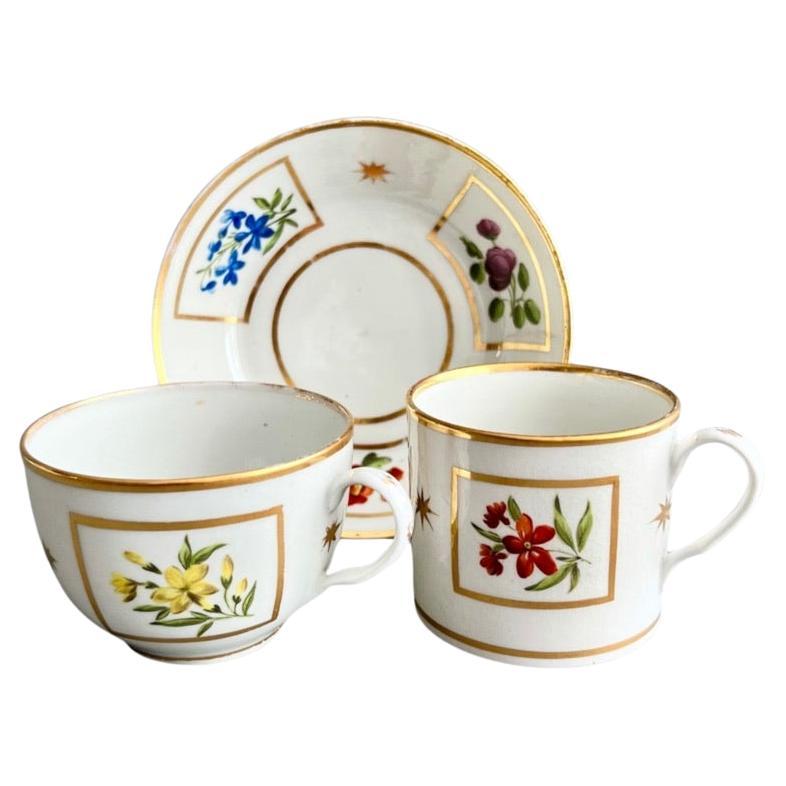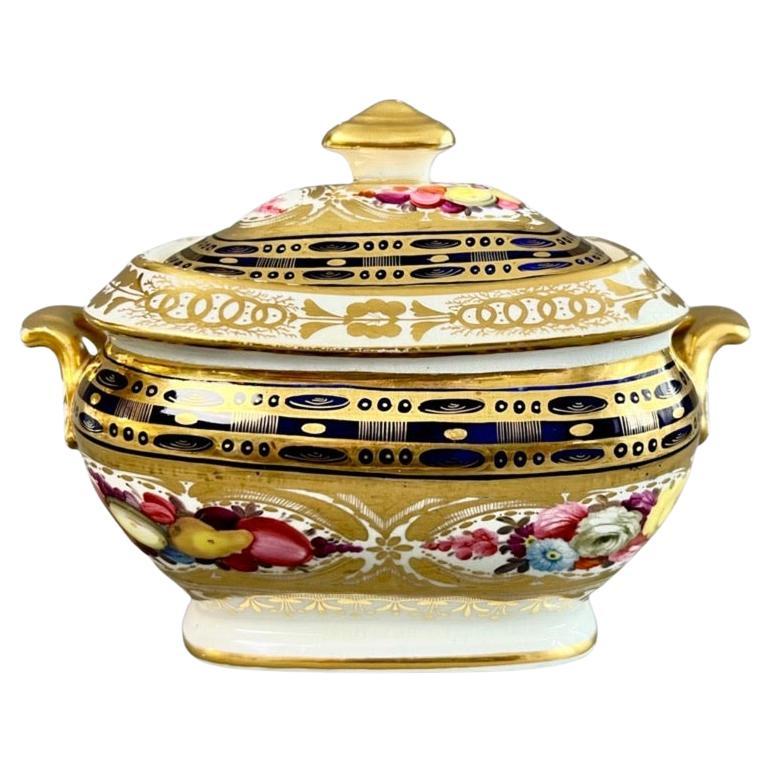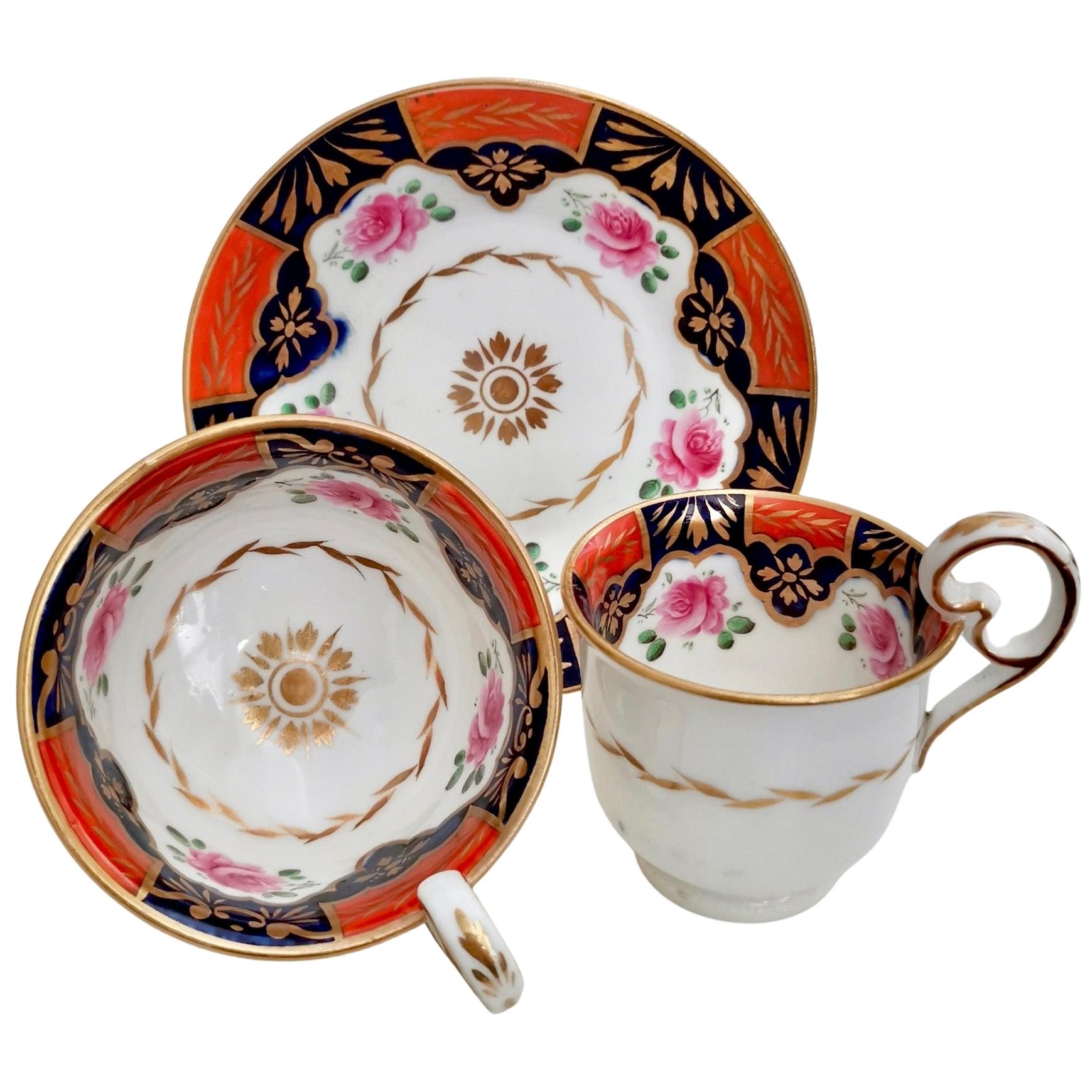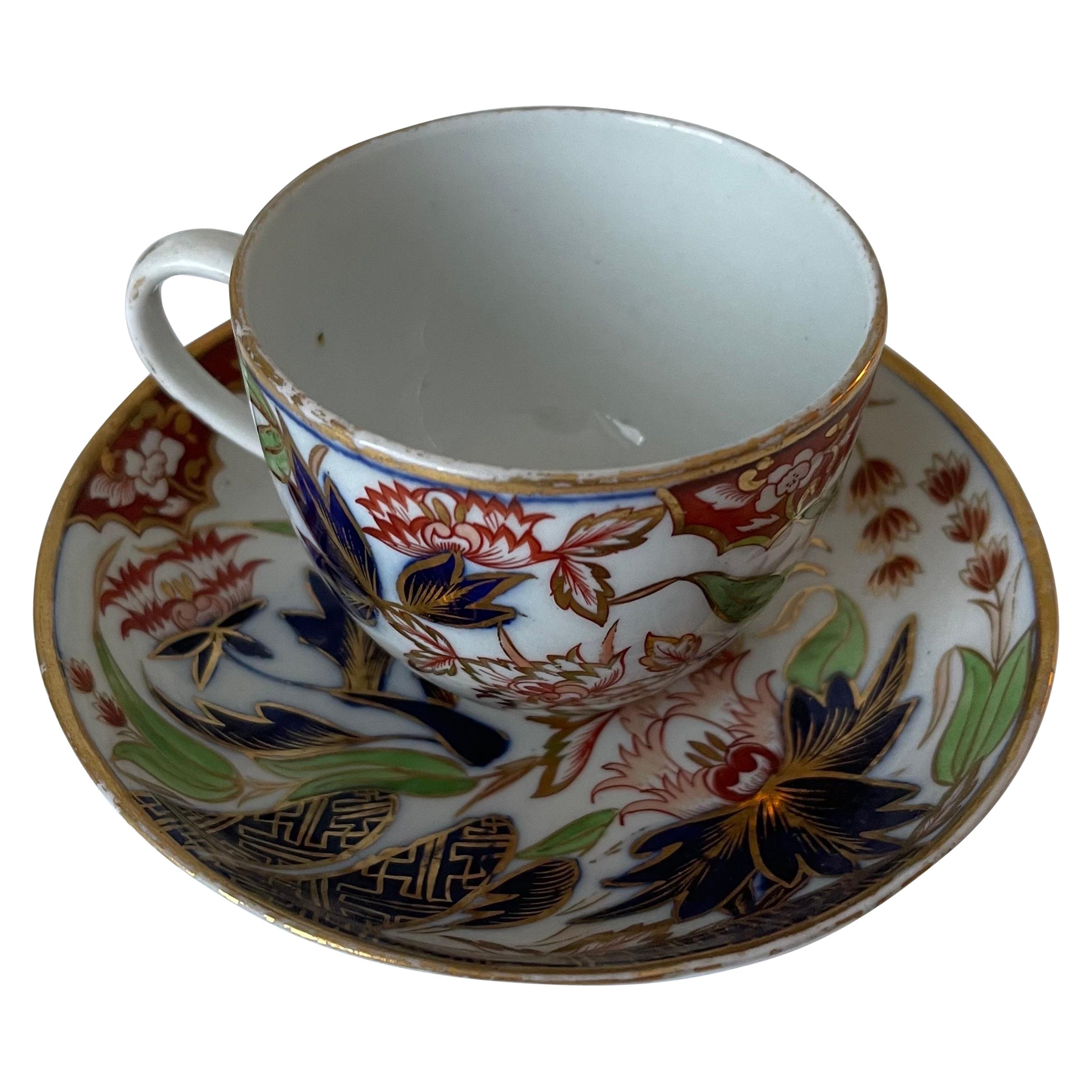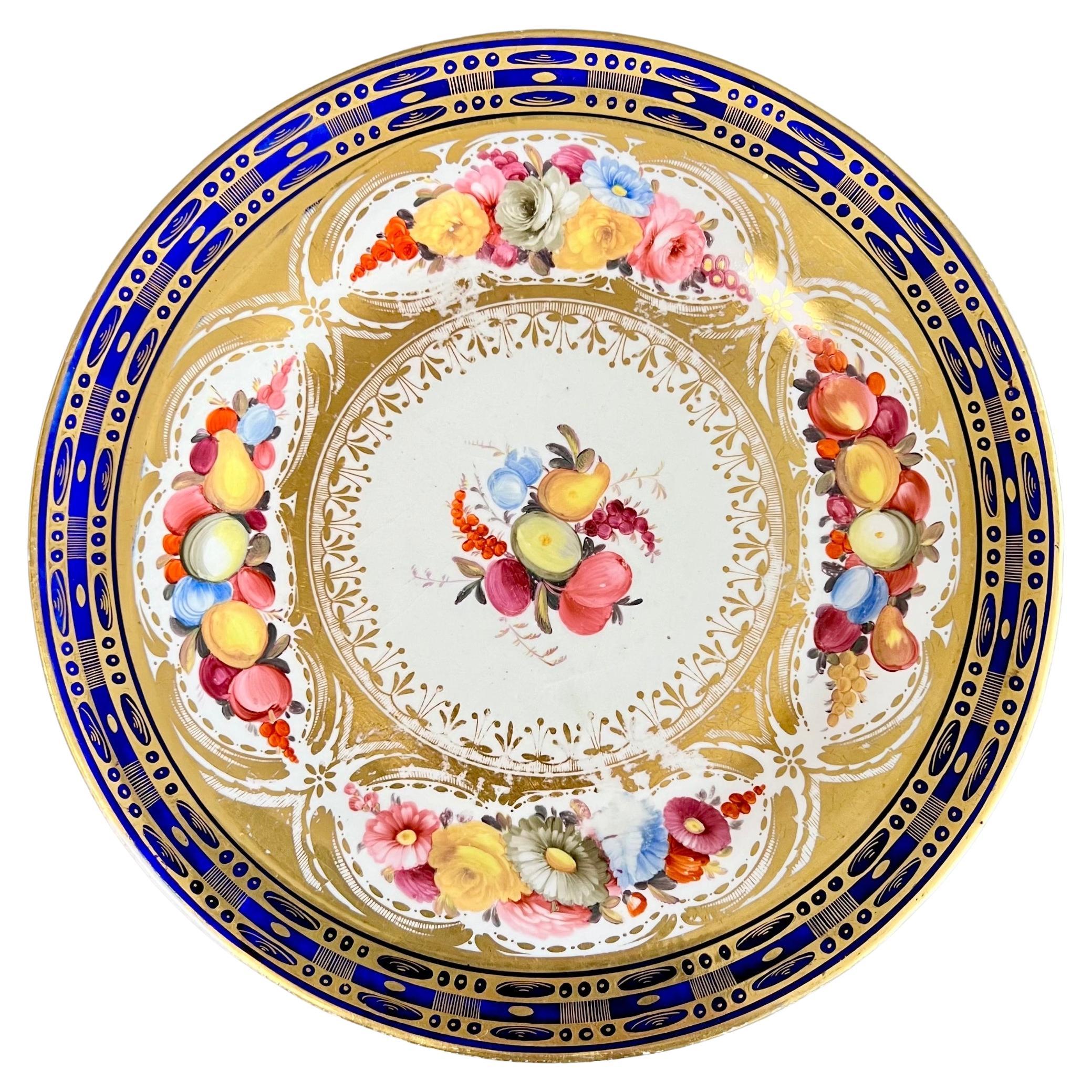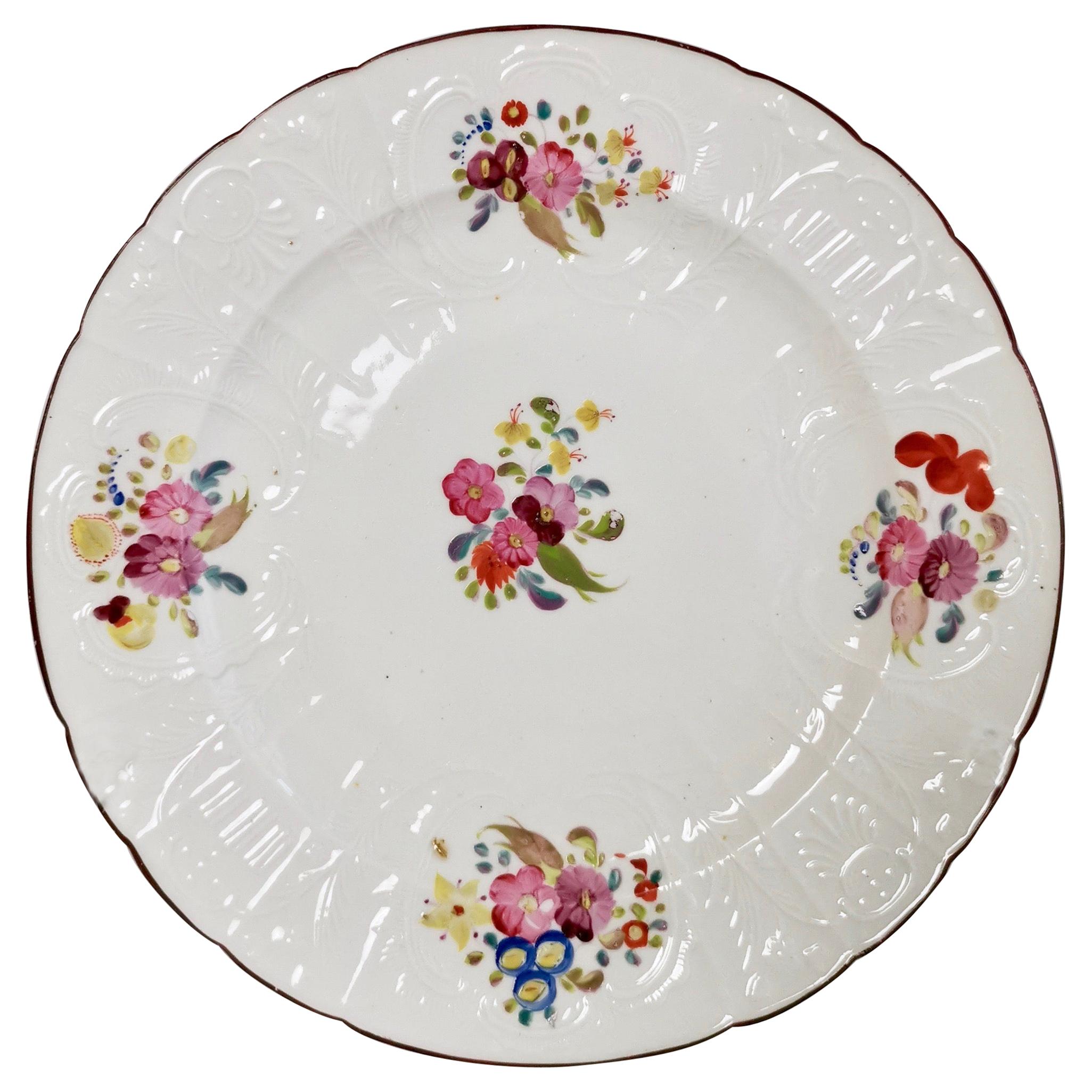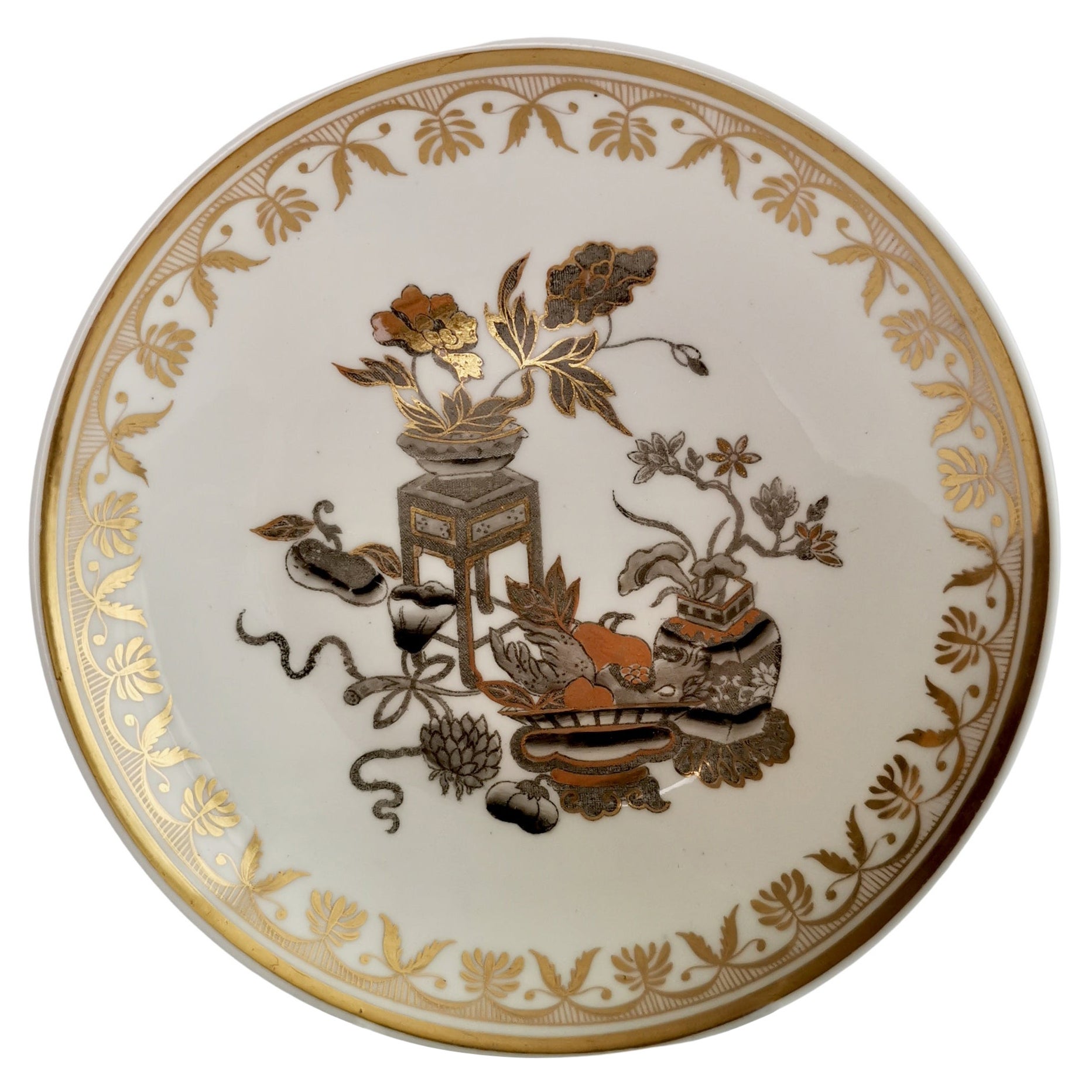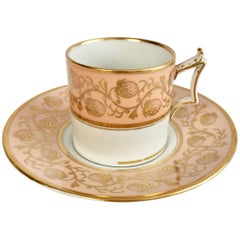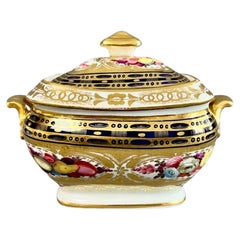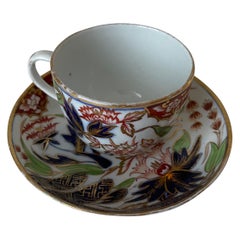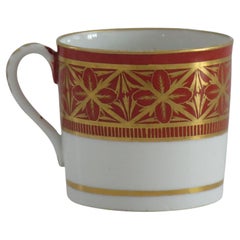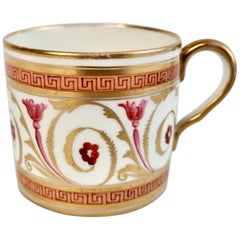
John Rose Coalport Orphaned Coffee Can Gilt, Peach and Pink, Regency, circa 1810
View Similar Items
Want more images or videos?
Request additional images or videos from the seller
1 of 11
John Rose Coalport Orphaned Coffee Can Gilt, Peach and Pink, Regency, circa 1810
About the Item
- Creator:John Rose (Maker),Coalport Porcelain (Maker)
- Dimensions:Height: 2.3 in (5.85 cm)Diameter: 2.6 in (6.61 cm)
- Style:Regency (Of the Period)
- Materials and Techniques:
- Place of Origin:
- Period:
- Date of Manufacture:circa 1810
- Condition:In good antique condition, old crack through the bottom and some light wear but good for use.
- Seller Location:London, GB
- Reference Number:Seller: A-COA212b21stDibs: LU4805120164292
About the Seller
5.0
Platinum Seller
These expertly vetted sellers are 1stDibs' most experienced sellers and are rated highest by our customers.
Established in 2016
1stDibs seller since 2019
208 sales on 1stDibs
More From This SellerView All
- Teacup Trio Coalport John Rose, Flowers in Gilt Squares and Stars, ca 1800By Coalport Porcelain, John RoseLocated in London, GBThis is a beautiful true trio made by John Rose at Coalport around the year 1800. It consists of a teacup and a coffee can sharing one saucer. In the 18th and early 19th Century, th...Category
Antique Early 1800s English George III Tea Sets
MaterialsPorcelain
- Coffee Can, Flight Barr & Barr, Peach Gilt Strawberries, Regency, circa 1815By Flight, Barr & Barr WorcesterLocated in London, GBThis is a beautiful coffee can and saucer made by Flight, Barr & Barr between 1813 and 1840, but most probably, circa 1815. It has a peach ground with a very charming gilt strawberry...Category
Antique 1810s English Regency Tea Sets
MaterialsPorcelain
- Coalport John Rose Sucrier, Cobalt Blue, Gilt, Flowers and Fruits ca 1815By John Rose, Coalport PorcelainLocated in London, GBThis is a stunning sucrier with cover made by John Rose at Coalport in about 1815. The sucrier is decorated in underglaze cobalt blue and has beautifully hand painted flowers and fru...Category
Antique 1810s English Regency Serving Bowls
MaterialsPorcelain
- Coalport Porcelain Teacup Trio, Orange with Roses, Regency, circa 1820By Nantgarw China WorksLocated in London, GBOn offer is a beautiful and rare "true trio" made by Coalport in about 1820. The trio has a beautiful Regency shape with heart shaped handles. This pattern is unusual and very rare....Category
Antique 1820s Welsh Regency Tea Sets
MaterialsPorcelain
- John Rose Coalport Plate, Canterbury landscape by Thomas Baxter, Georgian ca1810By Thomas Baxter, Coalport Porcelain, John RoseLocated in London, GBThis is a beautiful and very rare dessert plate made by John Rose / Coalport in circa 1810, which was the late Georgian period. The plate is decorated with a superbly painted named l...Category
Antique 1810s English George III Dinner Plates
MaterialsPorcelain
- Coalport John Rose Porcelain Plate, Cobalt Blue, Gilt, Flowers & Fruits, 1805-15By Coalport Porcelain, John RoseLocated in London, GBThis is a stunning plate made by John Rose at Coalport between 1805 and 1815. The plate is decorated in underglaze cobalt blue and has beautifully hand painted flowers and fruits, an...Category
Antique 1810s English Regency Dinner Plates
MaterialsPorcelain
You May Also Like
- Coalport John Rose Thumb and Finger Pattern Teacup & SaucerBy John Rose, Coalport PorcelainLocated in Stamford, CTEarly 1800s Coalport John Rose Thumb and Finger teacup and saucer: Hand painted, richly colored and detailed cup and saucer with hand painted gold band. No makers mark or signature. ...Category
Antique Early 1800s English Regency Porcelain
MaterialsPorcelain
- Coalport Coffee Can Porcelain Hand Painted and Gilded Pattern, circa 1810By Coalport PorcelainLocated in Lincoln, LincolnshireThis is a good quality coffee can that we attribute to the coalport porcelain works, Shropshire, England, made during the John Rose period of the George 111rd years, circa 1805-1810. The coffee can is nominally parallel, tapering slightly to the base, with a simple loop handle and pointed attachments. It has a shallow foot recess with obtuse corner and is unmarked to the base. The pattern is beautifully hand painted in gold gilt over a burnt orange ground, upper border pattern, with further gilt decoration to the outer handle and gilding around the upper and lower rims. We date this piece to the late George third...Category
Antique Early 19th Century English George III Porcelain
MaterialsPorcelain
- Pair Green Pink and Gilt Grape Leaf and Rose Cups and SaucersBy Royal Crown Derby PorcelainLocated in New York, NYPair green pink and gilt grape leaf and rose cups and saucers. Pair antique Derby porcelain breakfast or tea sets in vibrant green and soft pink with gilt vin...Category
Antique Early 19th Century English Tea Sets
MaterialsPorcelain
- Coalport Coffee Can Porcelain Hand Painted Cornflowers Pattern, circa 1805By Coalport PorcelainLocated in Lincoln, LincolnshireThis is a good quality coffee can that we attribute to the Coalport porcelain works, Shropshire, England, made during the John Rose period of the George 111rd years, circa 1805. The coffee can is nominally parallel, tapering slightly to the base, with a simple loop handle, with a slight lower kink and pointed attachments. It has a shallow foot recess with obtuse corner and is unmarked to the base. The pattern is beautifully hand painted in the French Chantilly style with cornflower sprigs in gold gilt and blue with red & green leaf detail to the lower half with an upper border continuous cornflower pattern, all between gold gilt rings with further gilt decoration to the outer handle and gilding around the lower rim. We date this piece to the late George third...Category
Antique Early 19th Century English George III Ceramics
MaterialsPorcelain
$234 Sale Price24% OffFree Shipping - Early Derby Porcelain Coffee Can att. to George Robertson, circa 1795By Derby, George RobertsonLocated in Fort Lauderdale, FLA green-ground porcelain coffee can made by the Derby Porcelain Factory circa 1795. This green-ground coffee can is a fine example of early Derby porcelain...Category
Antique 1790s English Georgian Porcelain
MaterialsPorcelain
$2,400 Sale Price25% Off - Meissen Porcelain Pink Roses Coffee Service and Embossed Decorations '11 Cups'By Meissen PorcelainLocated in Prato, TuscanyWe kindly suggest you read the whole description, because with it we try to give you detailed technical and historical information to guarantee the authenticity of our objects. Rare Meissen porcelain coffee service in Biedermeier style; the set consists of a teapot, a sugar bowl, a milk jug, and 11 cups with plate; the various pieces are made of fine hand-painted hard white porcelain with the "Pink Roses" decoration enriched on all items with sumptuous unpainted relief decorations. Unlike the simple and quite common "Pink Roses", this model is very rare, prestigious, and sought after, therefore even more expensive; in fact, the objects with this relief decoration, much more particular and detailed than others, were fired three times, while those with only the "Pink Roses" decoration only twice. Moreover, the execution of this ornamental motif with delicate and graceful flowers was entrusted only to the most experienced and skilled painters, those in possession of the prestigious diploma obtained at the "School of Drawing of Meissen" established since 1764. The knobs of the teapot and sugar bowl represent two harmonious and graceful rosebuds, also handmade; the edges of the cups and saucers are scalloped and finished with pure gold as well as the other decorations of the teapot and sugar bowl. All pieces bear the original Meissen trademark (two crossed swords) and from the enclosed list it can be stated with certainty that our service was produced between 1934 and 1944; moreover, on the objects the model is handwritten (61/106), this wording makes the artifacts even more precious and appreciated as they preserve all the characteristics of the author's calligraphy. Meissen porcelain was created in the castle of Albrechtsburg, in Meissen, a small town in Saxony near Dresden, in 1710, at the behest of Augustus the Strong (1670-1733), Prince-Elector of Saxony and King of Poland, who wanted to start production after the studies and experiments of his alchemist Bottger. Bottger discovered the formula for porcelain, in fact at that time, only the Chinese and Japanese had the recipe to create this wonderful material; Meissen was, therefore, the first porcelain produced in Europe! Bottger never revealed his formula to anyone, only a certain stage was known to the workers; we do not know, even today, in what proportions the different components are mixed; this is the great secret that allowed the famous brand to be considered the best in the world, Meissen porcelain is given the nickname of "white gold"! Through the years, Meissen has perfected its hard-paste products with high-temperature firing during its glazing. Meissen's porcelain patterns have been copied by many other manufacturers around the world such as Royal Copenhagen, Dresden, Herend, and many others, but Meissen's porcelain glaze maintains its quality over time and is superior to all (plates will not scratch with prolonged use of cutlery!). This is why even old Meissen...Category
Mid-20th Century German Biedermeier Porcelain
MaterialsPorcelain
$4,793 Sale Price / set20% Off
Recently Viewed
View AllMore Ways To Browse
Antique Spode Teapot
Minton Teapot
Italian Spode China
Orphan Coffee Cup
19th Century Italian Porcelain Coffee Set
Coalport Teapot
Minton Coffee
Antique Coalport Cup Saucer
Antique Coalport Cups And Saucers
Antique Pink Drinking Glasses
Coalport Coffee Can
Minton Teacup
Spode Italian
Coalport Teacup
Davenport Cup
Spode Teapot
Davenport Tea Set
Pink Porcelain Drinking
